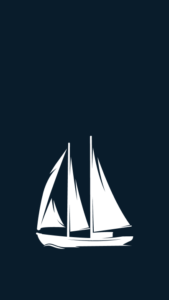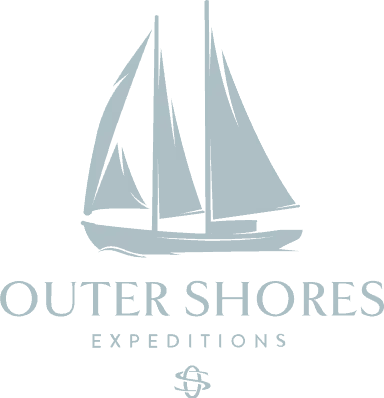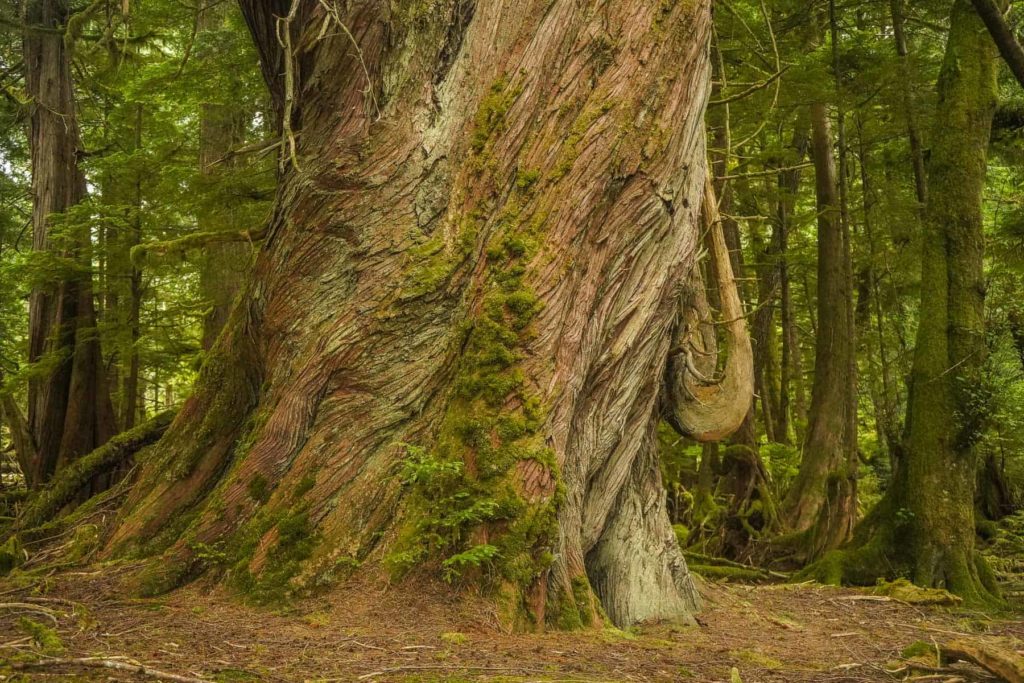
A 9-day expedition log through Haida Gwaii’s Islands of Beauty
Gwaii Haanas July 3-11, 2018
Crew: Captain Russell Markel, Deckhand Oriana Smy, Expedition Chef Erin Vickers, and Onboard Specialist:Graham “Jaahljuu” Richard
Disclaimer: Each day aboard the Passing Cloud is very full: full bellies, smiles, heads/hearts, and memory cards. An indeterminate amount of time and space is required to digest each and every moment, some which may present themselves as memories in later times. Please read with caution. Nostalgia and wanderlust may ensue.
Day 8: July 10
This morning after breakfast we go ashore at Bag Harbour. This may be my new favourite place – of the day so far. We traipse through a shoreline forest trail and into a different kind of ancient forest – one of a stunted variety. Calls of a Hermit thrush invite us into a saturated bog ecosystem. The spongy ground made up of sphagnum mosses and saprophytic plants cushion our every step. As we explore the nutrient- and oxygen-deprived region we learn about the important role boggy wetlands play in carbon stores. Acting as a “carbon sink” these peatlands pull and store carbon dioxide from the atmosphere in greater amounts than they emit.
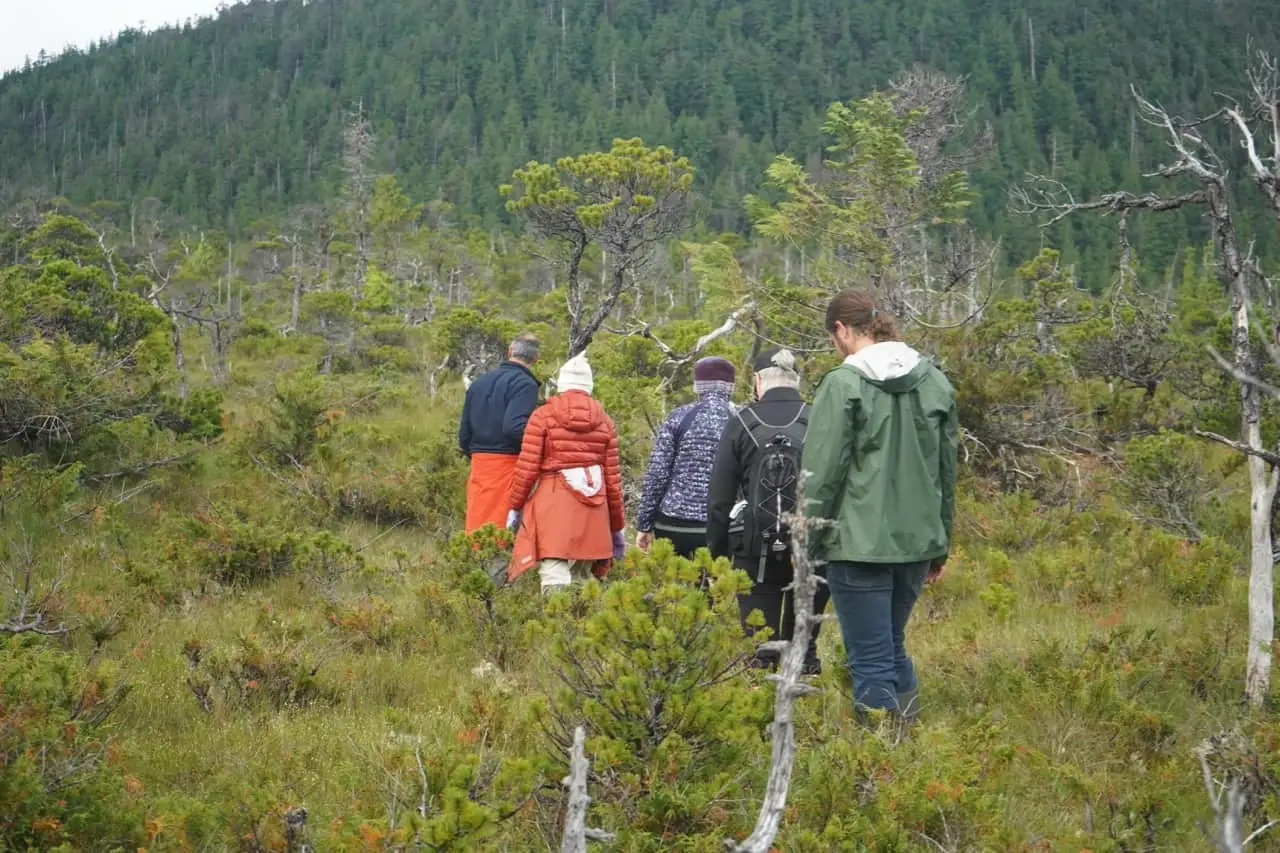
(Later on, I discover some fun bog facts from a National Geographic article on the subject that “peatlands only cover about 3 percent of the Earth but they accumulate more carbon than tropical rainforests,” according to biogeochemist Nancy Dise of Manchester Metropolitan University in England).

We tower over all vegetation as plants and trees are relegated to hip-height at best. Tiny cedar, hemlock, and pine trees twist, gnarled next to our knees. We unknowingly assume they’re young saplings. Russ explains these trees could very well be hundreds of years old. Lacking nitrogen, these trees are stunted to bonsai-like form adapting to their highly acidic environment. I nearly step on a cluster of tiny carnivorous round-leaved sundew plants. You must watch where you walk, as things aren’t always as they seem in this underestimated landscape, a mysterious world of biologically dense and squishy mass of layer-beyond-layer of both decaying and still-thriving life. After our curiosity-lead adventure, we step out of the bog and back into the forest to discover another ancient ecosystem of polar opposite grandeur only a short walk away.
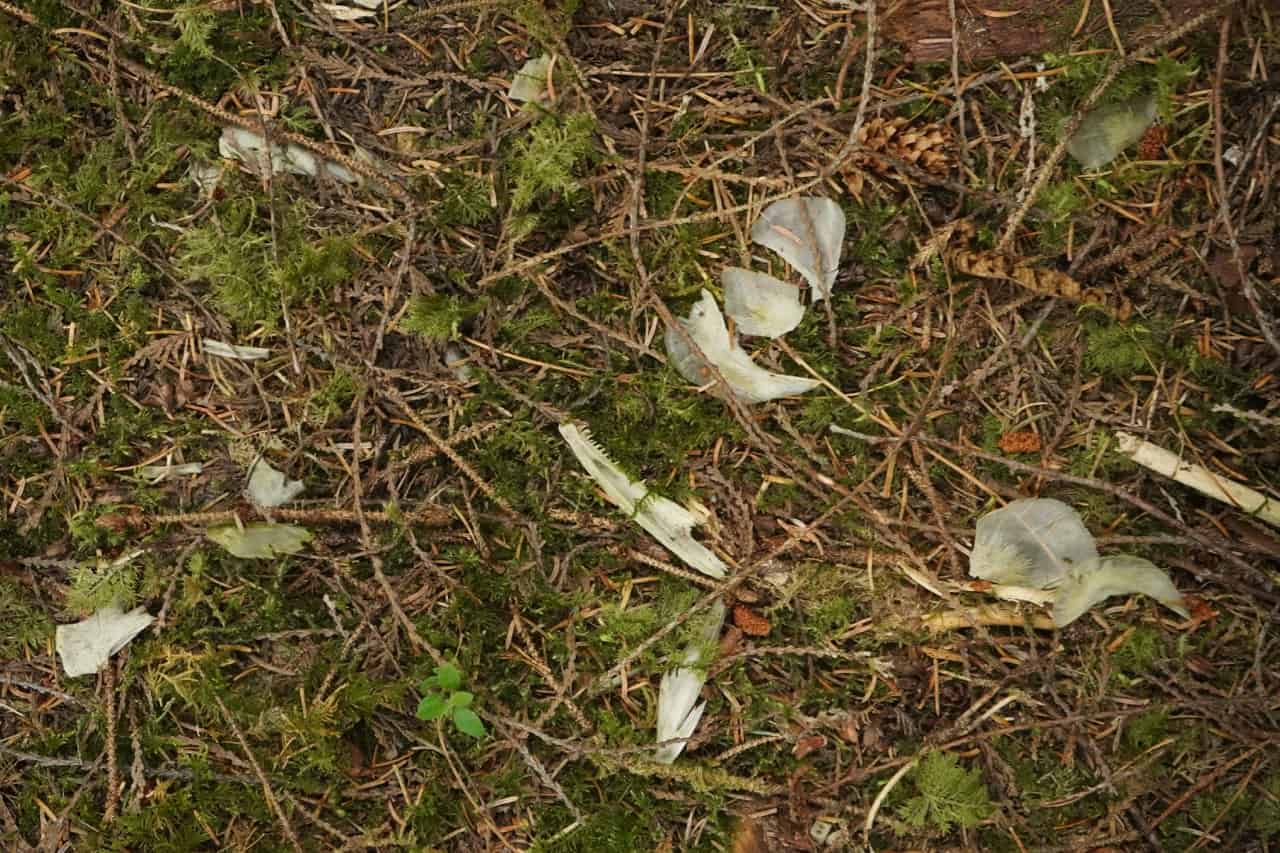
We find massive stands of old growth cedar trees lining a productive salmon river system. Salmon remains from last year’s spawn lay evident upon the moss-bed understory, dragged several metres from the river to the forest by the Taan (Queen Charlotte black bear) to help contribute to the salmon-fuelled forest cycle. We’re dwarfed beneath colossal cedar trees, now giant from generations of the salmon-derived nitrogen exchange. These are some of the biggest trees I have ever seen – and I’ve been lucky enough to see some fine examples in my lifetime.
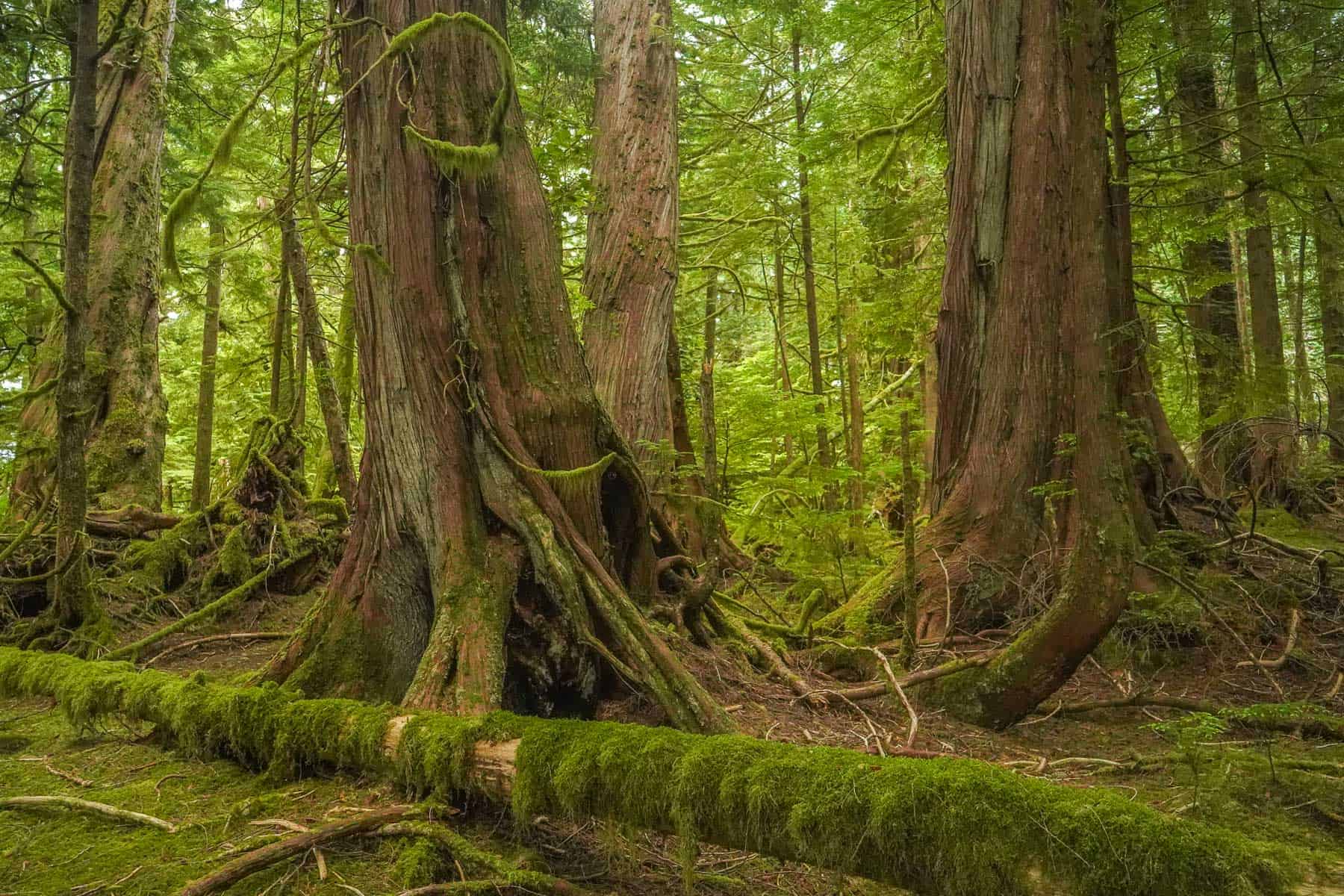
Many Coastal First Nations refer to Cedar as the ‘tree of life’, for the diverse ways it can be used, from clothing and baskets to longhouses and canoes. Entire industries and civilizations have risen and fallen at their base – the few lucky enough to be spared the chainsaw. Along the riverbed, we see signs of different generations living off of this land. Centuries-old scars of cedar bark stripping – now known as culturally modified trees, or CMT’s – mark several trees. Graham comments how a granddaughter would have pulled one of the more recent strips, while her great, great, great, great Nanaay (grandmother) could have done the other.

We walk along the raised riverbank and find a young bear skull, signs of a bear-by-bear kill to reintroduce the female back into the breeding pool. We sit down by the slow-moving stream and think about what this place would be like in the fall during peak salmon spawn. A lone raccoon – an introduced species to Haida Gwaii – wanders down the stream in front of us, looking under rocks for bugs and small fish. After some time un-alerted, he finally notices us and scampers away. As we walk back through the ancient forest, stepping ever so gingerly, we all seem to be holding our breath, awaiting for something to happen or just listening intently to nature surrounding us, really listening. We enjoy a feast of huckleberries at the river mouth before heading back to the Passing Cloud to continue our ship-based adventure.

We weigh anchor for our northwestward direction around Burnaby Island by Skutter Point with high hopes to set sail in some wind – something we have had very little of this week. We raise all sail on a broad reach. Passing Cloud comes to life and heels right over in her natural element, like an animal let out of a cage. We gybe and then tack out into Hecate Strait with a breach of a humpback whale in the distance off our port bow. We reach 7.9 knots and cruise into Juan Perez Sound.
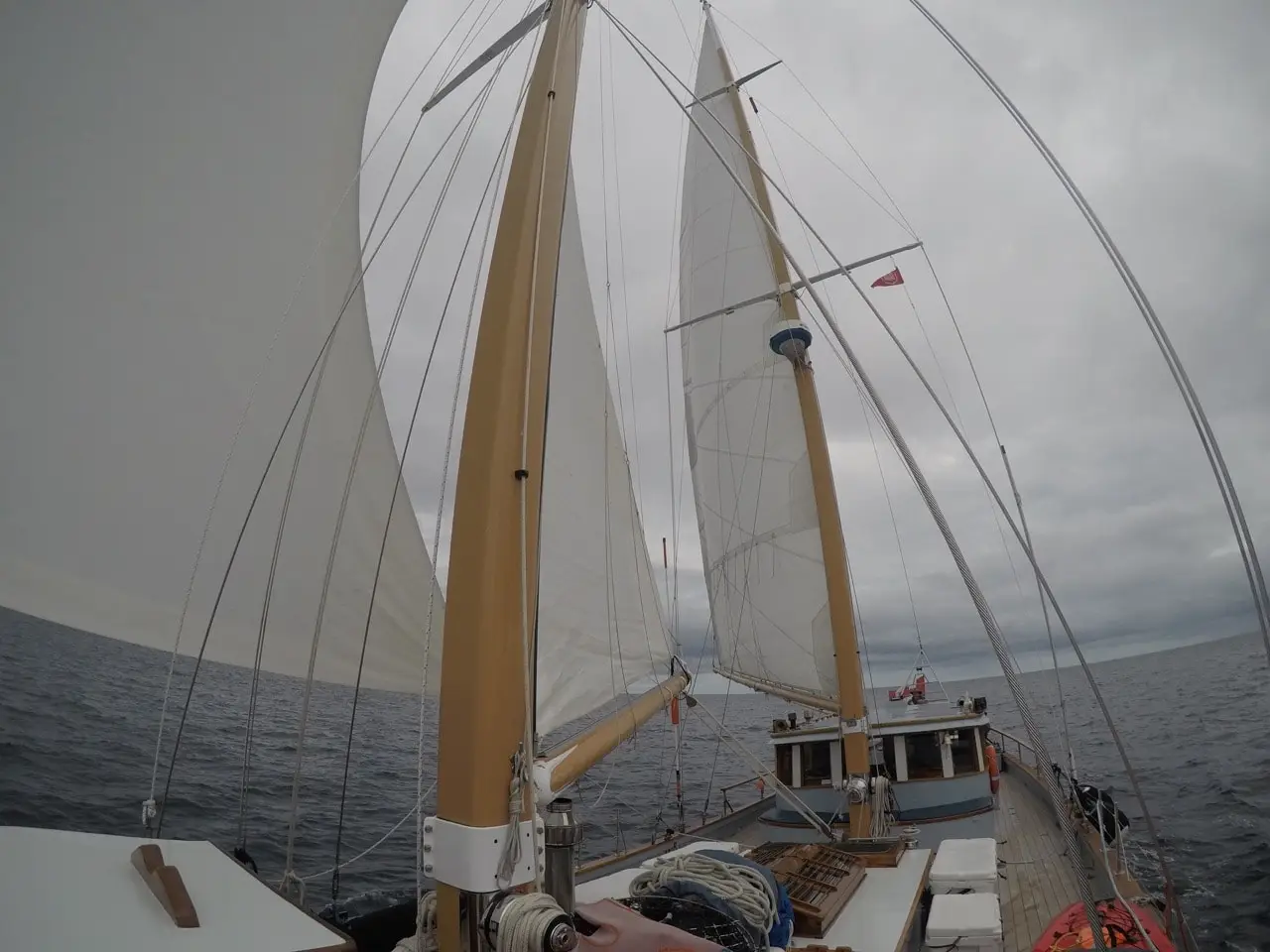
Our wind dies and we drop our anchor as the rain begins to mist, just enough to remind us why we needed to pack our rain gear. We arrive at Burnaby Narrows –one of the more biologically diverse marine regions of Gwaii Haanas, due to the constant flow of flushing tidal currents depositing mass amounts of nutrients. The species found here don’t have to work very hard for their food, hence the abundant life, not to mention the massive size of individual species, much larger than the average for most. Burnaby Narrows is certainly near the top aquatic biomass regions of the BC Coast.
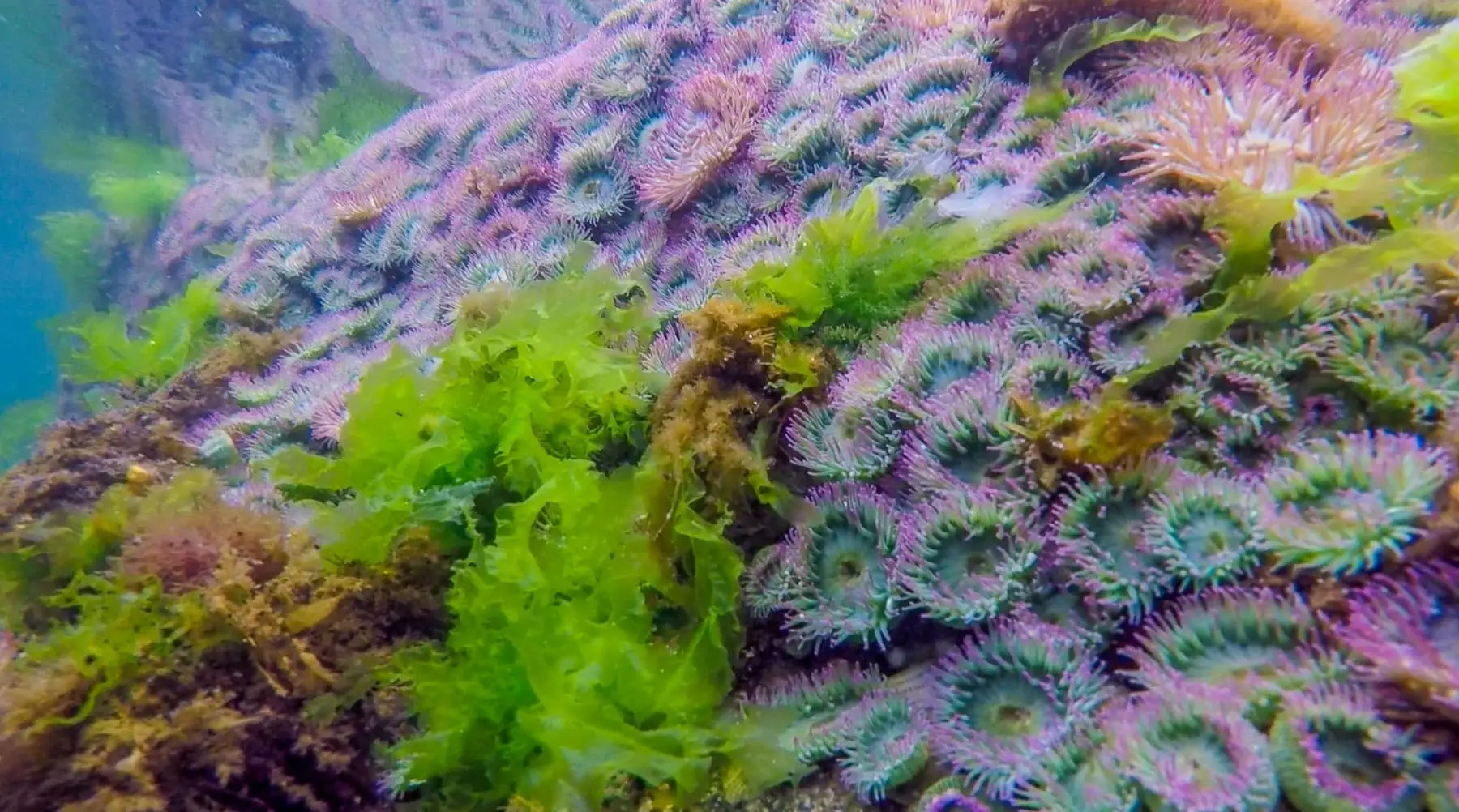
Graham and I take this last opportunity to snorkel again. We bring up specimens for the group to examine in their floating study session with Russ. We find sculpins (great and buffalo), rockfish and aggregate anemone walls brimming with tiny little tendrils, long flowing feather boa kelp and sea lettuce, and all kinds of algae collecting nutrients and housing an array of critters. I drift with the current, splayed out like a sea star floating above a sea of creatures stretched out just the same – bat stars of red, blue, pink, and purple. I see urchins (far less than our first snorkel earlier in the week, and certainly no barrens here) scallops, moon snails, and a collection of moon snail egg casings scattered on the sea floor. Bryozoans, barnacles, gigantic sea cucumbers, vermillion stars, leather stars, chitin, decorator crabs, rock crabs, and kelp crabs too! I can image Dr. Suess characters in my head and understand where his inspiration may have come from.
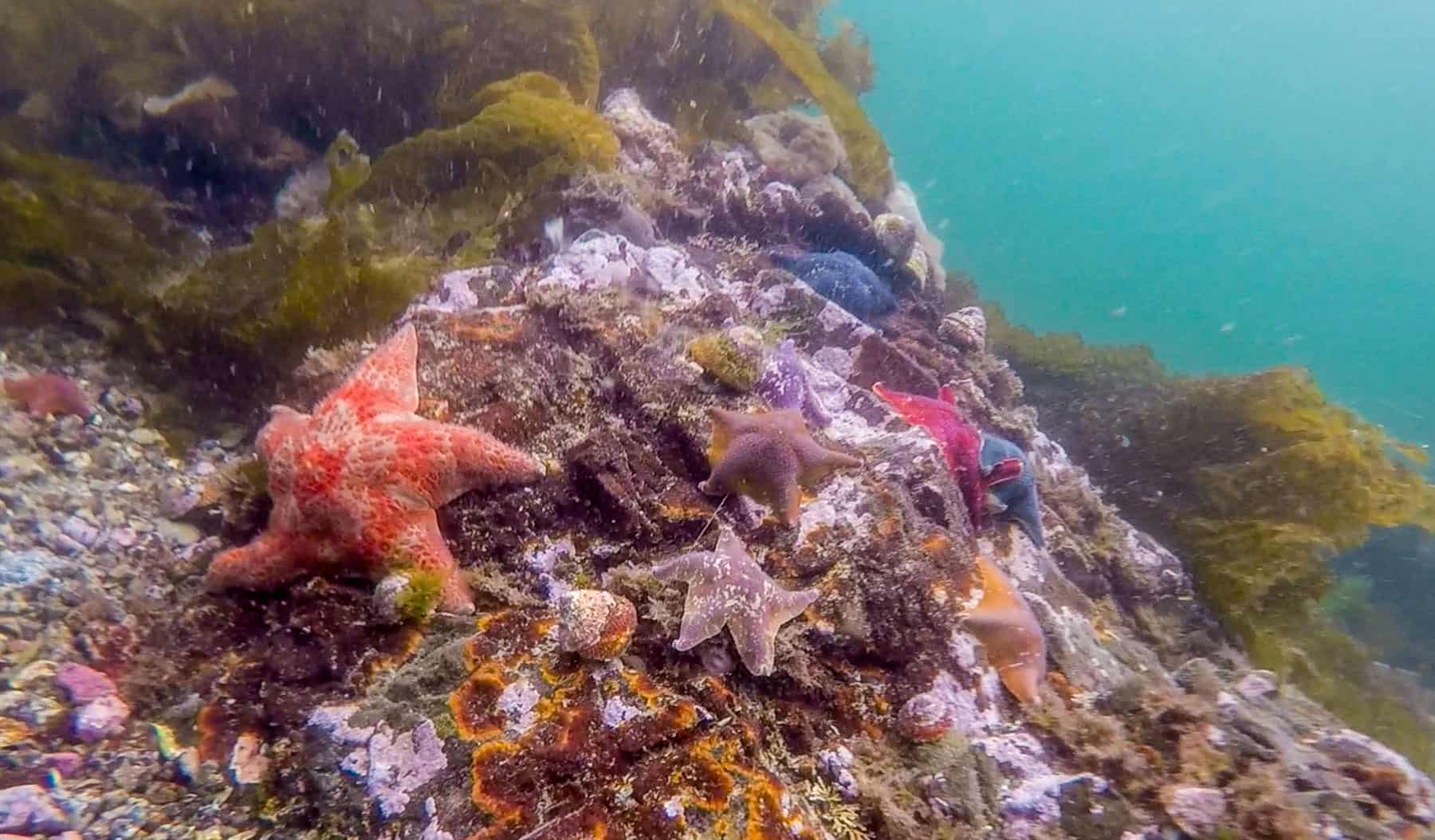
We have a fabulous final dinner of crab salad with tuna poké followed by the most amazing sablefish (black cod) appetizer marinated in soy, sesame, and ginger. For our main, we enjoy coho salmon with cauliflower puré and heirloom carrots, peas, and sea asparagus. As we’re eating dinner, a black object catches my peripherals. Out trundles Taan (Queen Charlotte black bear) on the adjacent beach – the largest of the 16 subspecies of black bears – ambling on the shoreline, nonchalantly tossing boulders aside in search of crustaceous snacks.
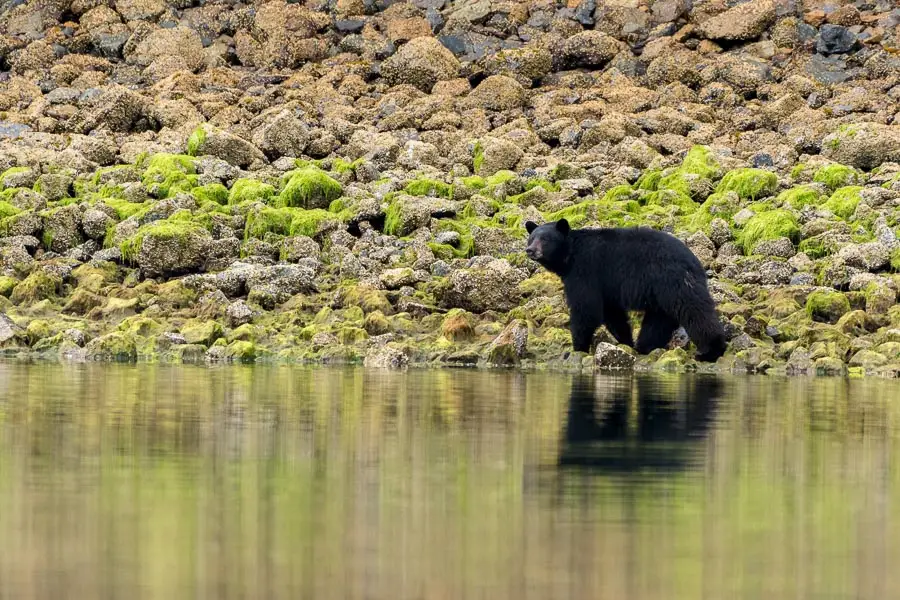
We finish our own delicious meal with Chef Erin’s interactive dessert of trading beads – her version made from chocolate Grenache. Graham starts off the bidding: 2-for-1. He gives 2 for 1 of someone else’s – how very generous, and how very Haida of him. After dinner, we all gather in the salon to review our route over the past 8 days. We introduce the ship’s glass ball, found by a lucky past guest. We use the glass ball as a sort of talking stick and pass it around the circle. Emotions run high as we each share our favourite moments and memories of our time together. Once strangers and now friends, we couldn’t have asked for a better configuration to share these experiences with.
